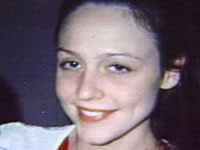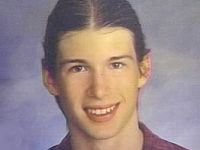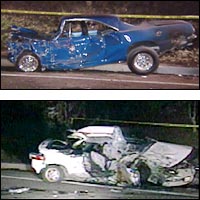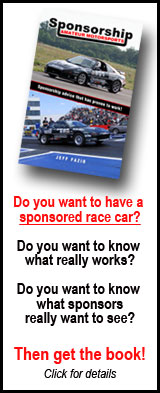Street racings deadly finish
Source: Union Tribune
Author: John Wilkens
Date: 2002/10/06


Still they die.
For the past four years, San Diego has been a pioneer in the effort to curtail illegal street racing.
Police created a special unit that targets racers. It arrests the drivers and impounds their cars. It also has closed off streets and had speed bumps installed on popular runs.
Legal
races have been set up at Qualcomm Stadium and Carlsbad Raceway. Prizes
are awarded.
And still they die.
The two latest victims, Shanna Jump and Brian Hanson, both 19-year-old Cuyamaca College students who were planning to marry, had their funerals yesterday. They were at least the 12th and 13th people to be killed this year – 20 have been injured – from street racing.
Their deaths are also a frightening milestone. Before them, you could read about a crash and say, "Well, what did they expect?" But Jump and Hanson were innocent motorists, not racers. They were heading home on the evening of Oct. 6 when a souped-up 1968 Plymouth Barracuda that police said was racing another car broadsided them on Imperial Avenue near Lemon Grove.
"Those of us who have been close to this have been predicting this forever," said Stephen Bender, a public-health professor at San Diego State University. "You can't call it an accident. It was totally predictable and totally preventable."
Bender has spearheaded much of the anti-street-racing effort in San Diego. His group, RaceLegal.com, organizes the drag events at Qualcomm Stadium and is a clearinghouse for statistics and information on the issue.
To many, 13 deaths might not seem like a lot compared to other recent body counts – 2,801 were killed at the World Trade Center in the Sept. 11 terrorist attacks – but to Bender it is a "staggering" number.
Staggering because the number of people (racers and spectators) who participate in illegal street races on any given Friday or Saturday night in the county is relatively small, about 900, he said.
Crunching numbers like the epidemiologist that he is, Bender estimates the death rate of the racing crowd at 14.4 per 1,000 participants. For all Americans, the annual death rate is 8.7.
"It is an epidemic," he said. "I know of no other public-health problem of that magnitude. It is off the scale."
The popularity of the 2001 movie "The Fast and the Furious" and the news accounts about local crashes give some people the impression that street racing is new. It isn't.
"Ever since there were two cars, there was a race," said Jim Wangers, the Oceanside-based publisher of Pontiac Enthusiast magazine.
These days, the larger illegal contests are organized on the fly. Caravans of cars roll from one business park or stretch of roadway to another at all hours, monitoring police scanners, talking on cell phones, sending out decoys before deciding that it's OK to race.
Spectators line the raceway, often just feet from the speeding cars.
Other "private runs" are spur-of-the-moment, with one driver rolling up next to another at a stoplight. A shared look, a nod of the head, and off they go. That's the type of race that led to all but two of this year's fatalities.
And that's the type, authorities admit, that is the most difficult to stop.
Nobody knows why street racing has boomed in recent years. Shawn Silva thinks it's a combination of factors. He is president of the Safe Racing Association, which sponsors occasional drag-racing events at Carlsbad Raceway and is trying to build a permanent motor-sports facility in the county.
"Part of it, I think, is just a strong resurgence in the competitiveness of people out there," Silva said.
The steady popularity of all kinds of motor sports, fueled in part by increased television coverage, contributes to it, he said.
And in the constantly changing world of auto trends, performance cars are back in vogue, Silva added.
"There was a period of maybe 10 to 12 years where you didn't see so much emphasis on speed and performance," he said. "But now that has switched back, and even entry-level cars are more powerful."
One sign of the passion for faster cars is the success of specialty shops and dot-com outlets.
Last year, sales of special supercharger blowers, headers and other equipment used by racers to customize compacts such as the Honda Civic and the Ford Focus jumped to $1.5 billion in the United States, up 25 percent from 2000, according to the Specialty Equipment Market Association.
Car industry observers say many companies are actively embracing street racing's edgy image, even as they distance themselves from its sometimes bloody realities.
Daimler-Chrysler, for instance, introduced the Dodge Neon SRT-4 at the Los Angeles Auto Show this year by employing two graffiti artists to spray-paint a colorful urban mural on a brick wall featuring the snazzy compact.
"I don't blame any of the carmakers" for wooing buyers in a cutthroat retail environment, Wangers said. "They should not be held responsible for the way in which some people use their products."
Daimler-Chrysler spokesman Jan Zverina acknowledged that the company has tried to drive home its sales message to the street-racing crowd.
"No way, though, do we condone illegal activity like racing on city streets," he said.
San Diego County has a network of body shops and parts stores where drag-racing enthusiasts can go to modify their cars. At JBA Racing on Convoy Street, business is up by more than 15 percent in the past year, primarily doing pricey makeovers on new Mustangs, Corvettes, Camaros and Firebirds.
"We get young people from 18 to 30 who have entertainment money to spend on their car," said Ron Colvin, the shop's general manager. "We also get baby boomers whose kids have left the house and they now have time to put together the car they dreamed about when they were kids."
Many of the store's customers are racing novices who simply want their cars to have the look of speed, not necessarily the massive, expensive horsepower.
"We have what we call a Stage 1 upgrade, in which drivers can add an air filtration system, headers and mufflers for $1,200," Colvin said.
However, others can spend $8,000 or more buying supercharger blowers (which boost power by pumping air into the engine), nitrous-oxide systems (which are the equivalent of chemical superchargers for the engine) and other high-performance equipment.
Colvin said he's aware that at least some of his clients leave the shop, get into their cars and go looking for competition on the street.
"That's entirely possible, human motivation being what it is," said Colvin, stressing that the shop does not condone racing outside authorized track sites. "But do we want legislation limiting individual freedom regarding our cars? People have to accept personal responsibility for what they do."
Bender, who in his 33-year career at SDSU has studied such public-health issues as safe sex, skateboarding and homicide, said he got interested in street racing in 1997 after seeing several newspaper articles about crashes.
The next year, in one four-month period, eight people were killed and 11 injured in street-racing incidents around the county.
"It was clear something had to be done," he said.
Using a public-health model that emphasizes safer racing alternatives, education and law enforcement, Bender started RaceLegal.com with state money that eventually totaled $2 million. It targets those ages 16 to 30 and has drawn attention from as far as Germany.
A key feature of the program is the Friday night drag races at Qualcomm Stadium. Two side-by-side, one-eighth-mile tracks are set up in the parking lot, enabling organizers to launch up to 480 runs per hour. Racers spend $15 to enter; spectators pay $5.
About 170 of the events have been held since 1998, drawing on average 225 racers and 2,000 spectators. Bender and others would like to find a permanent location for sanctioned races and hold them every weekend, maybe until as late as 3 a.m. Racing at Qualcomm ends at 11 p.m. because of noise restrictions.
Not everybody who is into racing comes to the stadium, of course. Some say the track is too short. Others are afraid of drawing attention to themselves and possible future scrutiny from police.
Officers are certainly active. In November 2001, San Diego police created a special unit, Drag-Net, to focus on street racing. It, too, is funded with state money, a $400,000 grant.
Frequently working undercover, Drag-Net officers have arrested 205 people for illegal racing in the city this year and impounded 75 cars. They have issued 348 citations for illegal engine modifications.
Penalties for racing are substantial. The driver's license is suspended for six months. The car is impounded for 30 days. Fines of up to $1,000 are levied.
Counting everything – bail, fines, impound fees, traffic school – it costs the typical offender $10,000 to get out of trouble, said Greg Sloan, the detective sergeant who heads Drag-Net.
It's not just the racers who are targeted. Police frequently videotape the license plates of the cars that show up at an illegal race, then send letters to the registered owners.
"In many instances, car owners are the parents who had no idea their children were out racing," Sloan said.
Drag-Net also monitors businesses that cater to racers. About 30 have been cited for issuing smog certificates to vehicles that actually had the smog equipment disconnected so they could go faster.
The crackdown is having an impact elsewhere. Police from Bakersfield recently came to San Diego to learn how the Drag-Net unit works. They said racers from here are showing up there.
San Diego has long been a hotbed for street racing. Sloan has a photo on the wall in his office of two cars racing on a dirt road in Point Loma in the early 1900s.
In summer 1960, the city had a racing-related riot that made national headlines.
A year earlier, the Paradise Mesa drag strip in east National City, the only place in the area that offered sanctioned racing, closed.
Local racers competed on the streets instead. There were crashes and at least one fatality. Police cracked down, arresting dozens of teens.
Frustrated by the situation, leaders of car clubs organized a protest for 1 a.m. Aug. 21, 1960, on El Cajon Boulevard.
Thousands of people came. The street was roped off between 35th and 40th streets and cars rolled up in pairs to a makeshift starting line.
The police moved in about 2 a.m. About 60 officers ordered the crowd to disperse and, not getting the desired response, lobbed tear gas. In return, some demonstrators heaved rocks and soda bottles.
When the melee ended, 116 people had been arrested.
"Are these the kinds of kids we want to own high-powered automobiles?" A.E. Jansen, the police chief, asked reporters. "Lack of a drag strip is certainly no excuse for this kind of conduct."
The next week, the protests continued. Street racers played cat-and-mouse games with police. They carried signs reading, "We Want a Drag Strip" and "Wipe Out Tear Gas." About 140 racers were arrested, some drawing jail sentences of up to 90 days.
Eventually, drag strips were opened in Ramona and Carlsbad, and tensions eased. But street racing never died. Every high school had guys who worked on cars, guys with a "need for speed," guys who would head out at night and find somebody to run against.
Sloan and Bender said last weekend's fatalities are tragic and discouraging, yet they believe the efforts to curtail street racing are working.
When they first started studying the problem, Bender said, an estimated 3,000 people were participating in the races countywide. That number is now about 900.
He also suspects the county may have had "significantly more" racing fatalities that went unreported in earlier years, so 13 deaths may actually be part of a downward trend.
"In the past, they may have been recorded as traffic accidents, without any mention of racing," he said. "Everybody's getting a lot better at identifying this."
Whatever the progress, those involved hold no illusions about stamping out street racing completely, even when those who cause fatal crashes face second-degree murder charges, as the Barracuda driver whose car hit Shanna Jump and Brian Hanson's vehicle now does.
"It's like smoking," Bender said. "Everybody knows the risks, but people do it anyway."
He said an incident in late August underscored how difficult it is to reach some of the racers.
After two people were killed in a race on Sorrento Valley Road, other racers planned a caravan to the site to pay tribute. Bender said he was there to watch.
The first group, arriving in about 40 cars, was respectful, he said. People knelt. They left flowers, pictures and candles. Many of them were friends of the deceased.
A second group of about 100 cars pulled in, and this one was more boisterous, Bender said – "not totally wild, but in more of a party mood."
Then a third group, "the real hard-cores," came along. Any notion of tribute or somber reflection disappeared in a disrespectful hail of alcohol consumption, insults and surliness.
"I was blown away," Bender said. "I just turned to my colleagues and said, 'There is so much work to do.' "
Questions, comments and criticisms can be directed to: Jeff

